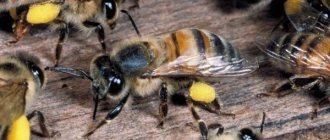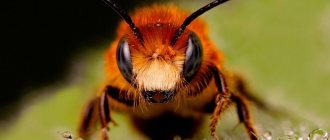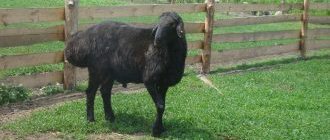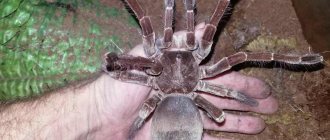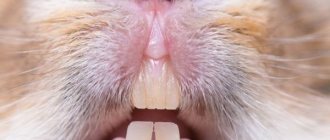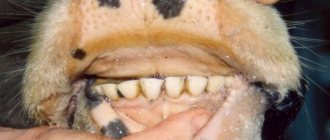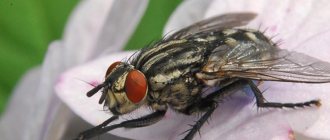The honey bee is admired by most who look at it. The structure of the bee distinguishes it from other representatives of the phylum Arthropods. Some people are interested in how bees see, their way of life, their body structure. Others are keenly interested in flight speed, varieties, or are thinking about breeding. The article will tell you about common types, the anatomy of internal organs and systems, and the features of the life cycle.
Honey bee
The most common breeds of honey bees
Depending on the ability to produce honey, all types of bees are divided into two: non-melliferous and honeybee. Bumblebees collect pollen, but do not produce honey, so they belong to the first species. Another common species is the alfalfa leaf-cutter bee, which participates in pollination but does not process pollen. Common breeds of honey-bearing species are:
- European dark. The body of the working individual is large, as for a representative of this caste, and dark. Honey, on the contrary, is light, often transparent. One family per season, with proper care, can produce 30 kg. The insects themselves are not painful and fertile. One minus is that they are very irritable.
- Ukrainian steppe. With a relatively small body, this species brings 40 kg per season. Able to withstand rapid temperature changes and disease. A negative feature of the breed is low fertility.
- Caucasian. It is similar in size and ability to work to the Ukrainian one, but much more aggressive. Pros: a longer proboscis, which allows you to collect nectar from deep flowers. Works both in fog and sunny weather.
- Carpathian honey plant. Brings 40 kg of honey and is not irritable. The body is small, gray in color. It tolerates frosts, but is characterized by rapid swarming.
- Italian. She is very clean, and therefore the honey is of high quality. The hive is destroyed by moths, whose waste products pollute the hive and can withstand many diseases. The downside is that it produces less honey than other breeds.
In addition to these breeds, there are Central Russian, Karnika, Buckfast and others, but beekeepers choose the ones listed. Due to their good productivity, reproductive ability and immunity, the Italian, Carpathian, Ukrainian and European dark honey bees are used by beekeepers in Russia, Belarus, Ukraine, Poland and countries with similar climates.
Wings
Wings are formed during the pupal stage. In adult bees, the wing is a thin, elastic plate along which veins run, which are hardened sections of hollow tubes. In drones, additional venation is found on the hind wings. The role of a fulcrum for the wing is played by a column - an outgrowth of pleirite. Outside the post there is a long shoulder; from the place of attachment to the segment membrane to the column there is a short arm. The main role in flight is played by the indirect muscles that fill the body cavity: the contraction of these muscles changes the curvature of the chest segments. Direct acting muscles act directly on the wing through tendons and chitinous plates. In flight, the front and hind wings are connected into a single plane by small hooks on the leading edge of the rear pair of wings, directed forward, which are called “hamulus” (lat. hamulus - small hook). When the insect lands, these hooks separate and the wings fold along the body. The total number of such hooks (hooks) ranges from 17 to 28 pieces.
A bee can fly at speeds of up to 65 km per hour (without a load, and with a load - 20-30 km per hour), while making 200-250 wing beats per second. They can fly up to 3-4 km from the hive. However, bees can work effectively with a bribe from a distance of no more than 2 km.
External structure of a bee
The body of a small insect consists of three parts: head, chest, abdomen. The eyes on the head have different functions: complex eyes see at long distances, and simple eyes see close ones and are responsible for the clarity of the image. There are 5 of them in total. Below is the bee's jaw, which is divided into upper and lower. The upper one is designed for chewing wax, and the lower one acts as a tube. Together with the lip, the lower jaw forms the bee's proboscis, through which liquid is sucked into the body.
The external body structure of the honey bee allows it to adapt to the scorching rays of the sun and bad weather. How? The cuticle, from which the exoskeleton is made, protects the body from fumes in the air, pathogenic bacteria, sunlight, and mechanical damage. On top it is covered with a layer of fibers, which further protects the owner. The eyes are surrounded by villi and pigment cells that protect them from direct rays. The bee's antennae, located on the head, serve as chemical indicators that warn of harmful substances in the air.
External structure of a bee
Bee wings, located on the chest, have no muscles and, in a relaxed state, are extended along the body. Their movement is carried out by the abdominal muscles, to which the pectoral muscles come to the aid, facilitating efforts. The wings are the most vulnerable place. Below on the chest are 3 pairs of legs. The first pair is the shortest, each leg has brushes for cleaning the wings and collecting pollen. Both paws and wings have one function - movement, but for the speed of movement the worker needs the latter more.
In the absence of pollen and nectar, the bee's speed reaches 65 km/h, and with increasing weight it drops to 25 km/h.
The structure of the bee's body ends with the abdomen, where the internal organs and sting are “hidden”. While the average weight of a bee is 0.1 g, some parts of the body are capable of growing, adding mass. In working individuals, the entire abdomen enlarges due to the digestive organs. It contains openings, spiracles, where the trachea ends. These insects do not have a specialized nose, but they have olfactory organs on their antennae. At the back is the anus and the bee's sting. Not everyone has the latter: drones do not need it, and queens use the sting only for reproduction.
Vision
A bee has five eyes on its head - three simple, located on the crown, and two complex, located at the edges of the head in the form of two large ovals. The simple eyes of a bee are similar in structure to a photographic camera. Just like on a camera plate, in the simple eyes of a bee objects are reproduced that affect the nerve endings branched here. In this case, all three separate images of the bee’s three eyes merge into one image. The complex eyes of a bee are structured completely differently. When examining a compound eye through a strong magnifying glass (loupe), we will notice that its entire surface is mesh and consists of several thousand individual small hexagonal-shaped areas (facets), reminiscent of the structure of bee cells. From each area of the surface of the eye, a gradually narrowing tube extends deeper into the eye, the walls of which are lined with a black, light-impermeable membrane. Each tube ends at the bottom with nerve branches. Thus, the complex eye of a bee consists of a large number of simple ocelli, or facets, fused together. In a drone they number up to 6-8 thousand, in a queen – up to 5 thousand, in a worker bee – up to 4-5 thousand. Each of the facets gives an image not of the entire object as a whole, but only of a separate part of it. There are thousands of such images of individual parts of an object in the bee’s eye, and in the bee’s brain they merge into an image of the object as a whole. Let's imagine that we are looking at a mosaic picture made from thousands of individual, well-chosen colored stones or pieces of glass. Although our eye catches individual details of the picture, every pebble or piece of glass, the whole image is imprinted in our consciousness, and not its individual parts. The vision of insects that have compound eyes is therefore called mosaic. Most researchers believe that bees examine objects up close with their simple eyes; but during flight they navigate with the help of compound eyes. When the compound eyes are removed or sealed, the insects appear to be completely blind. Therefore, it is believed that in a bee both types of eyes complement each other. With compound eyes located on the convex surface of the head, the bee can survey large spaces. It is no coincidence that they are much larger in drones: a large field of vision allows them to better navigate in space and find queens during their flight to mate. Experiments conducted by K. Frisch showed that bees distinguish some colors well, for example, blue, yellow, but they confuse other colors. So, for example, bees trained to fly to the color red fly not only to red, but also to black and dark gray. Bees accustomed to the color yellow fly not only to all shades of yellow, but also to orange-red and yellow-green. Bees distinguish only those shapes of objects that they constantly encounter in nature, that is, the shapes of the various flowers that they visit. The distinctive features of flowers for bees are their color and shape.
Features of internal organs and systems
The subtleties of a bee's anatomy are related to its work. The ability to create honey directly depends on the internal structure of the honey bee's body. It is worth considering that each worker system differs from the structure of other insect representatives. The structure of the bee depends on the function of the insect in the hive.
Digestive system of bees
The complexity of the honey bee's digestive system is due to the need to process pollen into honey and normal digestion.
| The oral apparatus (oral cavity) of a bee. | It starts with the jaws and goes into the pharynx. Used for grinding food. Invertase is secreted here, converting pollen into honey. |
| Pharynx and esophagus. | Lingering in the esophagus, the pollen exits back into the oral cavity, where it gradually turns into honey. Food goes from here to the stomach. |
| Honey goiter. | It is an expanded part of the esophagus where pollen accumulates. Thanks to the muscles, it increases 4 times. |
| Stomach. | The section where food digestion begins. Passes into the intestines. |
| Large and small intestines. | This is where most nutrients are broken down. Performing the functions of the honey bee's excretory system, it is able to accumulate feces throughout the winter. Opens into the anus. |
Digestive system of a bee
Bee circulatory system
The central organ remains the heart, which has 5 valves. It is located between the diaphragm and the abdomen, representing a rather wide vessel capable of contraction due to muscles. The entire vascular system is not closed, like in humans, but passes from the arteries to the internal organs. A feature that is unusual to observe in an animal’s body is the presence of air tubes. Such tubes serve to transport oxygen to organ tissues - the circulatory system does not fulfill this role, transporting blood with nutrients.
Bee circulatory system
It is difficult to call blood itself such, because its structure is more reminiscent of plasma - hemolymph. The uniformity of its current is regulated by diaphragms, since in a calm state the insect needs blood circulation speed almost three times less than during flight.
Respiratory system of a bee
Due to the bee's increased need for oxygen, the respiratory system is strategically located throughout the body. Air enters through small holes called spiracles. Three pairs are placed on the chest, and six on the abdomen. The spiracles are protected by villi, making it impossible for dust or microorganisms to enter the bee's body along with air. Oxygen reaches the air sacs and is then carried to other organs by air tubes (tracheas, tracheoles). Exhalation is a reverse process where air leaves the air sacs. Only the third pair of spiracles release carbon dioxide.
Respiratory system of a bee
Bee sensory organs
Sensory organs are considered to be antennae, villi, and eyes. Placing the eyes almost in a semicircle on the head helps to see objects around, as well as the space below and above. Upon closer inspection, it is noticeable that each eye has thousands of meshes that allow it to determine the direction of the sun. Therefore, it is not difficult to assume that the vision of these insects is different from the vision of other animals. What colors can all bees see? Orange, yellow, green, blue are colors with shades that are more distinguishable by bees than others. That's why the hives are painted with such colors - this is a hint to the insect where its family is located. Separately, the eyes of bees perceive ultraviolet rays, but it is difficult to call this color.
In addition to the chemical component of the air, the antennae allow the body to determine the ambient temperature and its humidity. The honey bee can hear thanks to the auditory openings on its legs and body. Taste buds in the throat, proboscis, paws and antennae help in choosing quality food.
Nervous system of a bee
The well-developed central nervous system of the honey bee varies in size and shape among members of the bee colony. The nervous system is divided into:
- Brain. Consists of ganglia and nerves emerging from it. In drones, the visual center is more developed, while in the queen, the working individual, this section is no different from the rest.
- Nerve cells. Nerves are made up of neurons that are scattered throughout the body. The executive organs are glands and muscles, since it is to them that the honey bee unconsciously gives signals to change movement, continue secretion, or stop.
- Sympathetic system. Characterized by (incomplete) autonomy. Its goal is to harmonize the functioning of the digestive, respiratory, circulatory or musculoskeletal systems.
Nervous system of a bee
Circulation
The body cavity of a bee is filled with a colorless liquid - blood, which contains colorless blood cells. All the internal organs of the bee located in this cavity are, as it were, washed with blood. From the blood they receive the necessary nutrients, and into it they give substances that the body does not need and must be removed from the body. The blood in the bee’s body, moving, part of its path (from the abdomen to the head) passes through the only blood vessel in the bee’s body; the rest of the way (from the head to the abdomen) it flows not in the vessels, but directly into the body cavity. The blood vessel (heart) lies in the abdominal cavity, closer to the dorsal surface, and looks like a tube consisting of five chambers. Each chamber is separated from its neighbors by special valves that open only in one direction, as a result of which blood can move inside the heart tube only in one direction. A long tube extends from the heart - the aorta; it passes from the abdomen to the thorax, then to the head and ends with an open end in the head of the bee. When the heart expands, blood from the body cavity enters the heart through slit-shaped valves. When the walls of the heart are compressed, the blood, after passing through all the chambers, enters the aorta. It passes through the aorta to the head, where it flows back into the cavity. From the head cavity, it moves freely in the opposite direction throughout the body cavity, and when it reaches the heart, it flows into it and completes the previously described path.
Despite the absence of blood vessels, blood always moves in the body cavity along a strictly defined path. This direction of blood flow in the abdominal cavity is given by two longitudinal partitions (diaphragms). One of them is located between the heart and the intestinal canal, the other - between the intestinal canal and the abdominal wall of the body.
Life cycle features
Due to the distribution of roles in the hive, each caste has a different purpose in the life cycle of a new honey bee. So, the uterus serves for reproduction. Apart from her, no one will lay eggs, therefore a hive cannot exist without this caste. The queen leaves the hive only in one case: when swarming occurs, she flies with the new family to look for a new home.
Workers care for the larvae, which emerge as the next stage of development of the young honey bee. They develop 3 days after the eggs are laid. The larvae cannot survive on their own, so worker bees feed them all the time while they are developing. After 6 days, the larvae are sealed in honeycombs with wax until pupation. They spend 12 days in such boxes. Already young individuals (imago) crawl out of there on their own - no one can help them with this. The imago has a more tender body and does not sting. The purpose of her presence in the hive is to clean the hive and maintain it in working order.
| Formation stage | Uterus | Working bee | Drone |
| duration in days | |||
| Egg | 3 | 3 | 3 |
| Larva | 5 | 6 | 7 |
| Doll | 8 | 12 | 14 |
| Total: | 16 | 21 | 24 |
If the eggs are not fertilized, they develop into a drone. These are large insects that lack the ability to collect and process pollen and have no sting. The duties of drones include fertilizing the uterus. This is where the real race begins, since there are many individuals capable of this and not all can fertilize it. For failure to fulfill their duties, extra drones are kicked out of the family. Apart from fertilization, the drone has no other functions. And the protection, arrangement, and construction of the hive is the prerogative of the worker bee, where representatives of other castes do not interfere.
The life period of new honey bees closes at different times: if the queen lives for 7 years, then the worker honey bee dies by the end of the 8th week of life. Drones have an even shorter cycle - 5 weeks. During this time, a new generation manages to grow up, sometimes in larger numbers than necessary. In this case, the production of honey and the construction of honeycombs stop: the family begins to divide into two, which is not at all desirable for the beekeeper, since half of the family will fly away. By reducing the amount of honey, it is possible to determine that there is a danger of swarming and an experienced owner can prevent it.
| Life period | |
| Uterus | 7 years |
| Working honey bee | 8 weeks |
| Drone | 5 weeks |
How do they communicate with each other?
The language of bees is unique and mysterious. Back in the seventeenth century, it was discovered that the language of bees lies in dancing. More in-depth studies have shown that they are capable of transmitting information with their movements of different speeds and the strength of their buzzing, forming a kind of dance, no matter how many individuals participate in them. Sometimes it looks incredibly beautiful, but often the most beautiful movements are nothing more than a warning of their own attack.
Such movements are complemented by a specific range of odors, barely perceptible and discernible only by the insects themselves. She can mark a flower that produces a lot of nectar with a special smell.
Differences in the structure of worker bees, queens and drones
A clear distribution into castes creates the opportunity to highlight certain differences. Moreover, the characteristics of the structural features of the queen bee differ from the characteristics of the structure of drones or workers.
| Uterus | Drone | Working honey bee |
| Dimensions of the individual | ||
| Less drone, but more worker bee. | Large (2 times larger than a worker bee), large abdomen. | Smallest in size. |
| Features of the external structure | ||
| The abdomen is oblong, at the end there is a sting, which is used for laying eggs. | There is no sting, the eyes are located very close. | It is covered with villi, has a rounded abdomen and a sting with poison. |
| Features of the internal structure | ||
| In the abdomen there is a sac for drone sperm - needed for laying eggs. Releases pheromones that help the family detect it. | The vision needed to find the uterus has been developed. There are no organs to create honey. | There are subpharyngeal glands that produce a secretion for processing pollen and a honey crop for storage. |
| Female, genitals are developed. | Male individual. | Female, genitals are underdeveloped. |
Wild bees differ from domestic bees in color and size - they are smaller and not so brightly colored. The nature of such insects is angrier, and therefore, when approaching a wild hive, it is expected that the family will begin to defend itself.
The structure of a bee is striking in its complexity, where every detail is provided. The distribution of roles in an insect hive cannot be repeated by other animals and people, with the exception of ants, where the hierarchies are similar. The hard work of little bees helps teach them to love work, and honey helps them gain pleasure and improve their health.
Origin
The characteristics of arthropods indicate a relationship with annelids and serve as evidence of their origin. Scientists believe that they evolved from ancient marine polychaete worms.
Polychaete worms
These representatives also have chitin in their bodies. It is contained on the “jaws” and bristles. There is a noticeable similarity in the external and internal structure of these two groups of organisms.
The body is represented by a segmented structure; the limbs of arthropods correspond to outgrowths of the body of polychaete worms. The nervous system has the same structure in these groups of living organisms.
All three subphyla (Trilobite, Chelicerate and Jawfish) evolved from ancient polychaetes independently of each other and at different times. This assumption is supported by the difference in the structure of the respiratory organs and the division of the body. Representatives of the Cheliceraceae subtype have retained the greatest similarity with ancient sea worms.
Why do insects buzz?
This is due to the fact that the size of the wings, their number and flapping speed simply do not allow the sound to be reduced during flight. It turns out that only those insects that do not flap their wings so often and whose wings are larger than the body itself can fly quietly. Bees have small wings, so the speed of their flapping must be enormous. This is how the buzzing sound is created when flying.
Using the power of buzzing, individuals communicate with each other. In this way, insects are able to exchange information. It looks incredibly mesmerizing. However, most often such communication in insects is nothing more than a warning of impending danger.
Caution: danger
Since the abdomen is quite mobile, and the sting has a pointed shape and resembles a saw, the bite is applied very accurately. As a result, poison containing dangerous toxins is released. After being bitten, the insect loses its sting and dies.
Bee venom, or apitoxin, has the opposite effect on the body. On the one hand, it causes allergic reactions. If the number of bites is more than 180, it causes more dangerous consequences: vomiting, diarrhea, convulsions, respiratory arrest. In some cases, numerous stings can lead to death.
The use of bee venom for therapeutic purposes has a positive effect on the body. It is used as an analgesic and antibacterial agent, to increase the overall tone of the body and blood vessels, increase the number of red and white blood cells, and accelerate metabolic processes.
Systematic position
First, let us determine the position of this organism in the system of the organic world. This is a representative of the kingdom Animalia and the phylum Arthropods. A bee is an insect that belongs to the order Hymenoptera. The last group also includes ants, wasps, riders, bumblebees, and hornets.
The main systematic feature of these insects is the structure of the wings, which have a membranous structure. There are two types of mouthparts. Wasps and ants are gnawing. Bees, on the other hand, have a gnawing-licking mouthparts that allow them to feed on the nectar of flowers.
Orlovsky
This is a subspecies of the Central Russian bee. The breed was bred at the Beekeeping Research Institute (Oryol Experimental Station). The insects are large, the color of the fur is dark gray. The advantage of the breed is its ability to withstand the harshest conditions. Because of this, the breed has a late spring development, but it passes quickly. The individual weighs 104 g, the length of the proboscis is 6.3 mm. Compared to the Central Russian breed, they are less aggressive.
Other features:
- do not steal from other people's hives;
- increased immunity to diseases;
- egg production of the uterus - up to 3000 eggs per day;
- honey productivity – 50-70 kg per family;
- increased wax productivity;
- The volatility is insignificant - up to 5%.
The Oryol breed is a late honey collector; they collect honey from linden, buckwheat, and fireweed. Suitable for breeding in the Central, Volga, Ural and Siberian federal districts. The breeding base is located in the Oryol Polesie national park (Oryol region).
A specialist tells novice beekeepers about bee breeds and how to choose the optimal breed:
